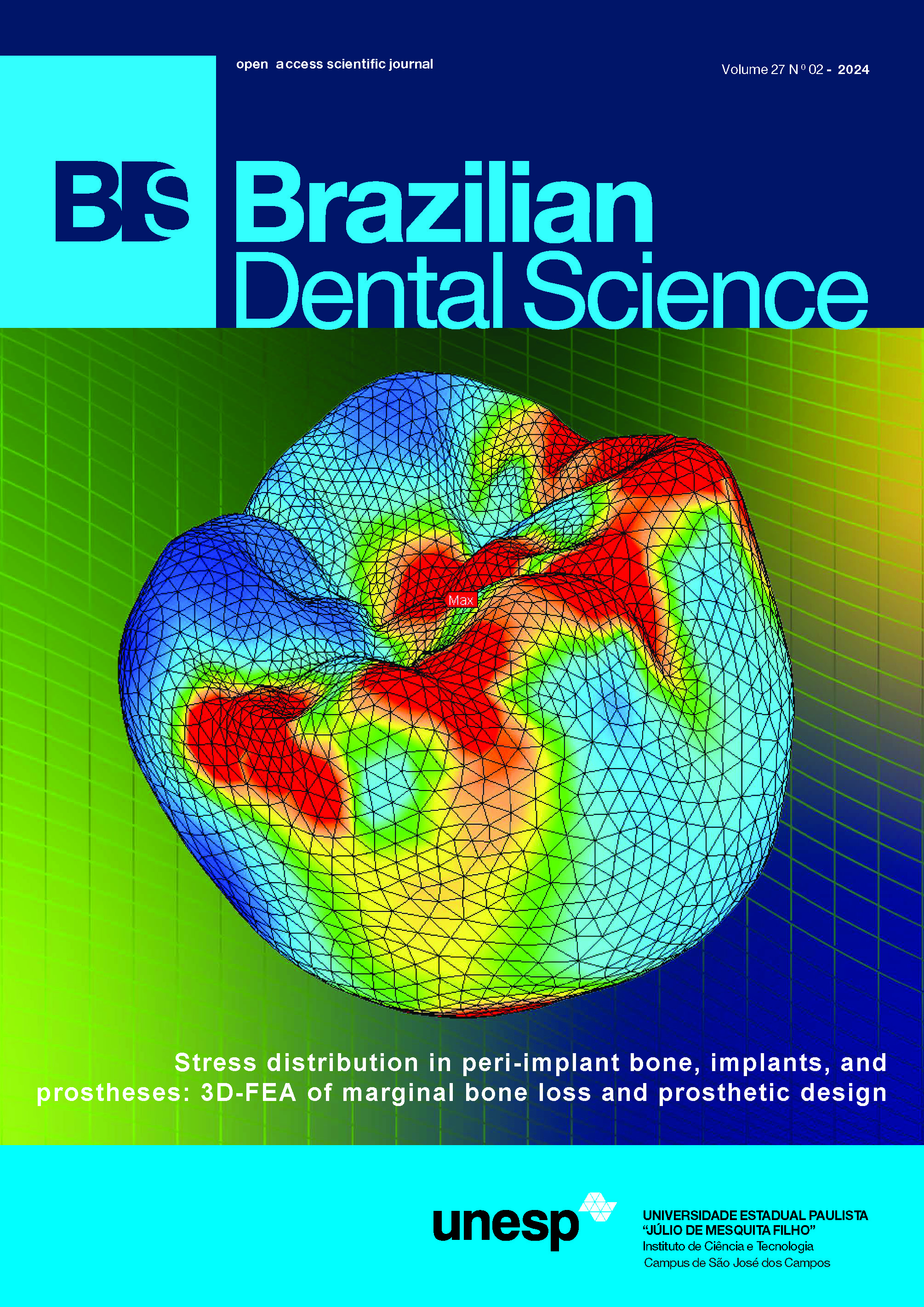The effect of ZnO nanoparticles addition to PMMA on surface contact angle and adhesion of Candida albicans
DOI:
https://doi.org/10.4322/bds.2024.e4201Resumo
Background: Heat polymerized polymethyl methacrylate resin (PMMA) is a porous denture material prone to microbial attachment due to water absorption. Candida albicans (C. albicans) in PMMA can cause denture stomatitis. Zinc Oxide Nanoparticles (ZnO NPs) possess antimicrobial properties. Objectives: This study aimed to investigate the effect of adding various concentrations of ZnO NPs to PMMA on surface contact angle and C. albicans adhesion. Material and Methods: The PMMA samples (10x10x2mm) were prepared with ZnO NPs concentrations of 0%, 2.5%, 5%, and 7.5% (n=4). The samples were soaked in distilled water 48 hours at 37°C. The contact angle test was performed using drop-profile analysis. C. albicans adhesion test was evaluated through the 3-(4,5-dimethyl-2-thiazolyl)-2,5-diphenyl-2H-tetrazolium bromide (MTT assay) for cell viability. The distribution profile of Zn element was observed using SEM-EDX. The release of Zn2+ was tested by analyzing the aqueous solution after sample immersion AAS. Results: The mean contact angles (°): 82.96±4.20; 82.36±0.66; 86.25±4.49; and 92.82±5.40. Results of post-hoc LSD showing differences only in the 7.5% ZnO NPs group. The mean viability C. albicans (%): 2.27±0.80; 1.55±0.50; 1.45±0.33; and 1.43±0.12. There was a tendency of decreasing means with increasing concentrations. However, this trend was not consistent with one-way ANOVA, which indicated no significant differences among the treatment groups. SEM-EDX demonstrated ZnO NPs distribution within PMMA’s matrix. AAS results revealed no Zn2+ presence in distilled water. Conclusion: In conclusion, the addition of ZnO NPs to PMMA results in an increased contact angle, while exhibiting a statistically non-significant reduction in C. albicans adhesion.
KEYWORDS
C.albicans; Contact angle; Nanoparticles; PMMA; ZnO.
Downloads
Downloads
Publicado
Como Citar
Edição
Seção
Licença
TRANSFERÊNCIA DE DIREITOS AUTORAIS E DECLARAÇÃO DE RESPONSABILIDADE
Toda a propriedade de direitos autorais do artigo "____________________________________________________________________" é transferido do autor(es) para a CIÊNCIA ODONTOLÓGICA BRASILEIRA, no caso do trabalho ser publicado. O artigo não foi publicado em outro lugar e não foi submetido simultaneamente para publicação em outra revista.
Vimos por meio deste, atestar que trabalho é original e não apresenta dados manipulados, fraude ou plágio. Fizemos contribuição científica significativa para o estudo e estamos cientes dos dados apresentados e de acordo com a versão final do artigo. Assumimos total responsabilidade pelos aspectos éticos do estudo.
Este texto deve ser impresso e assinado por todos os autores. A versão digitalizada deverá ser apresentada como arquivo suplementar durante o processo de submissão.
























